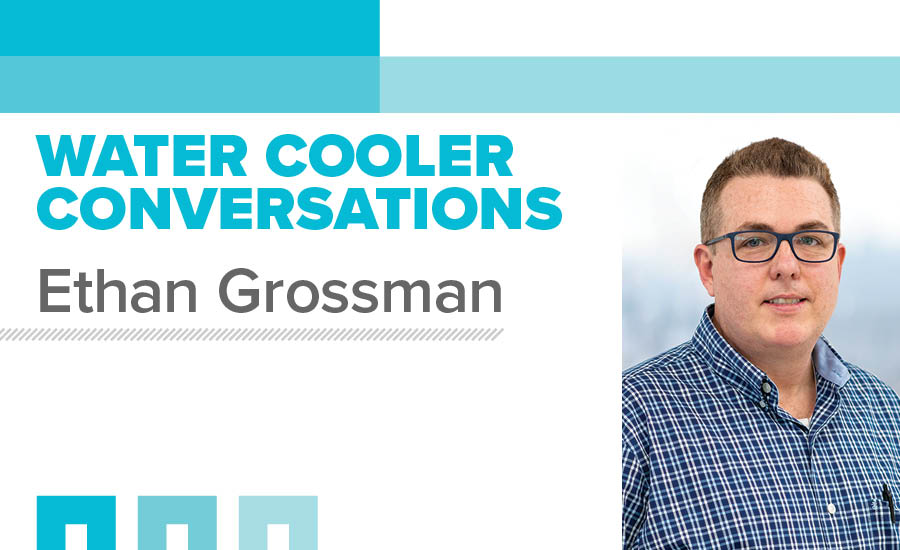We engineers love our equations. Imagine asking an engineer a question, and they hold up a finger gesturing for you to wait quietly while they punch numbers into their calculator. You can hear the calculator buttons clicking as quickly as someone typing on a keyboard. After an anticipatory pause, they look up at you and give you some astronomical figure that makes your eyebrows go up involuntarily, at the same time thinking. “This person really knows their stuff!”
Or do they? What is even better is when we invoke the name of an equation or principal that barely applies to the situation at hand. It was just an opportunity to throw it out there as if we were casting a spell: “Psychrometric Chart” or “Ideal Gas Law”.
Many of the design challenges we face are not actually ideal. We know this because they depend on human behaviors and a range of other variables, which are many times unpredictable. The field of plumbing engineering is particularly geared towards solving design issues based on conditions that are not ideal. For example, a stormwater system is designed to safely convey stormwater, yet the intensity of storms can be unpredictable. Another example is domestic water. The quality of potable water varies from region to region and may affect our decisions for what types of materials we use or whether we need to provide filtration or treatment.
Empirical formulas and data
When we throw around terms like “best engineering practice” we are saying just that. Quite frequently, the design decisions we make are based on our experience and the best engineering of our colleagues and predecessors. This foundation of support has strong validity, and is drawn from a deep well of empirical knowledge. The term empirical is used to describe formulas and data that are:
“Based on, concerned with or verifiable by observation or experience rather than theory or pure logic.”
One of the most useful empirical formulas plumbing engineers use is the Manning formula.
The Manning formula is used to determine the velocity of uniform flow in sloping drains. Robert Manning was an Irish hydraulic engineer who developed his formula when he was 73 years old. While Manning did not receive any formal training in engineering, he worked as a draftsperson, self-studied and eventually took on the responsibility of chief engineer of the Irish Office of Public Works.
The Manning formula is presented in ASPE Engineering Design Handbook, Volume 1, as:
Equation 1-2: V= ((1.486 x R^(2⁄(3 x )) S^(1⁄2) ))/n.
This equation gives us the velocity of flow in feet per second, where “R” is the hydraulic radius, “S” is the slope of the surface of flow and “n” is coefficient related to the roughness and fouling of the conduit. The empirical, or experimental nature of Manning’s work has to do with the fact that he studied no less than seven formulas that were used at the time — in the late 1800’s — and created his own mathematical model.
Velocity is an important property for us to understand. If we oversize drainage pipe we may not achieve the minimum “scouring velocity.” By the same token, as you look at the formula, we can increase flow velocity by increasing the slope. What I find interesting is the Manning formula calculates velocity independent of flow rates. As we consider the effect of low-flow fixtures on plumbing drainage design, maybe we should be asking ourselves: “Should scouring velocity be increased due to the increased ratio of solids to liquid?” Recommended minimum scouring velocities range from 2 to 3 feet per second while maximum recommended velocities for drainage pipe range from 12 to 18 feet per second.
To express the Manning formula in terms of flow rate, we can use equation 1-3 from the ASPE Design Handbook: Q=VA. Rearranging the formula with V on the left, we get Velocity equals Flow divided by Area, and the Manning equation can be re-written as:
Equation 1-3a: Q= ((1.486 x A x R^(2⁄(3 x )) S^(1⁄2) ))/n
The data from these empirical formulas have been presented to us in the form of handy tables and used to inform the plumbing codes that our design efforts are guided. Still, it is worthwhile to understand the mathematics and where the formulas come from. Now and again, you may be challenged to use these formulas to understand an unusual condition.
Other well know empirical information we use include The Hunters Curve and Regional Weather Data. Roy B. Hunter outlined his empirical method in The National Bureau of Standards Report BMS66 in 1940. Hunter used sound mathematical methods, mostly rooted in probability, to develop a method that relates fixture units to flow. Section 10 of Hunter’s report BMS66, entitled “Adequacy of the Method,” even states the success of the method will depend on actual trial over a period of years. This is one of the main characteristics of empirical methods: Using our best theories to model a system.
Rainfall rates appear to be recorded and tracked thoroughly since they affect so many aspects of our lives, primarily agriculture. These rates are the empirical data we use to design piping systems that convey stormwater safely down through buildings. How overflow drainage is managed between jurisdictions are empirical design decisions put forth in codes based on the experience of those code officials.
As we practice plumbing engineering, empirical data and formulas become like second nature to us. Many of us can sense frustration in our clients and colleagues when our designs do not fall into an exact, or ideal science. Sometimes we need to ask questions to add to the well of empirical knowledge and support our best engineering practices. The empirical component is what makes our job interesting, adding an investigative element and allowing room for creativity in our designs. Plumbing engineering is not rocket science: It is a field of engineering that is built on a legacy of empirical data and formulas, with the primary purpose of protecting the public health.




